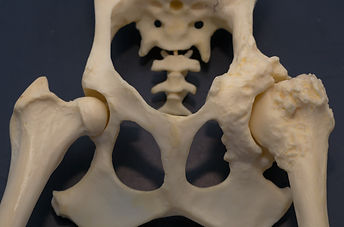
About Pain Management
What is a veterinary pain clinic?
A veterinary pain clinic is very similar to a human pain clinic. It is run by veterinarians that have advanced training in veterinary pain management. A pain clinic can provide an advisory service to other veterinarians, and an outpatient service (consultations) directly to pet owners.
Veterinarians are highly trained in acute pain management, and as such most pain conditions are well treated by your primary clinician. Occasionally pain extends beyond the scope of standard treatments and requires the help of a pain clinic.
What type of conditions are treated?
Pain conditions fall into one of two categories:
-
Acute pain or post-surgical pain. In this case, we use short-to-medium duration drugs to tackle the pain and inflammation associated with the tissue trauma.
-
Chronic pain conditions. This is the most common type of pain we treat at the pain clinic. Osteoarthritis is the most common chronic pain condition, although there are many more. Neurological pain, especially spinal disc pain, is common in veterinary patients. Oncological (cancer) pain is a unique type of chronic pain. This chronic pain is often of malignant origin and pain management here provides palliative care for these patients.


What are the treatments used at the pain clinic?
The primary form of pain management is often medical management (medications). Optimising a pet's pain management may require the use of multiple medications. Only medications that are effective, and doses at the lowest effective dose, should be used. It can take some time to assess your pet's response to different pain medications, and find the right 'cocktail' for them.
We offer three types of interventional pain management procedures:
-
Long-acting nerve blocks > administration of anti-inflammatory medication around painful nerves to reduce their pain signal transmission.
-
Intraarticular treatments (including cortisone, Platelet-Rich Plasma (PRP), Hyaluronic Acid (HA), Botox and other novel treatments > treatment directly into painful joints.
-
Nerve Ablation > neurolytic procedures that aim to destroy the nerve thereby reducing or eliminating pain signals in that area and thus providing long-term pain relief.



How long is a pain clinic consultation and/or procedure?
Pain clinic consultations are 90 minutes long. During your initial consultation we will discuss your pet's current pain concern, medical history including current pain management. We will perform a physical examination of your pet. We will discuss pain management options for your pet with you. Procedures may be performed during this time. Procedures are generally performed under sedation and as such we ask that all animals are fasted for a minimum of six hours prior to any consultation. Recovery from procedures are generally rapid and patient's are expected to go home soon after.
Following your consultation we contact your pet's primary veterinarian to ensure they remain an active participant in your pet's pain care. Follow up consultations are usually required once every one to three months, but vary with each individual.
What about complimentary treatments?
Complimentary treatments such as nutrition, exercise, weight loss, nutraceuticals, physiotherapy, hydrotherapy and others, can play an important role in your pet's pain management. We will discuss and recommend these treatments, as indicated by each individual pet's requirements.
